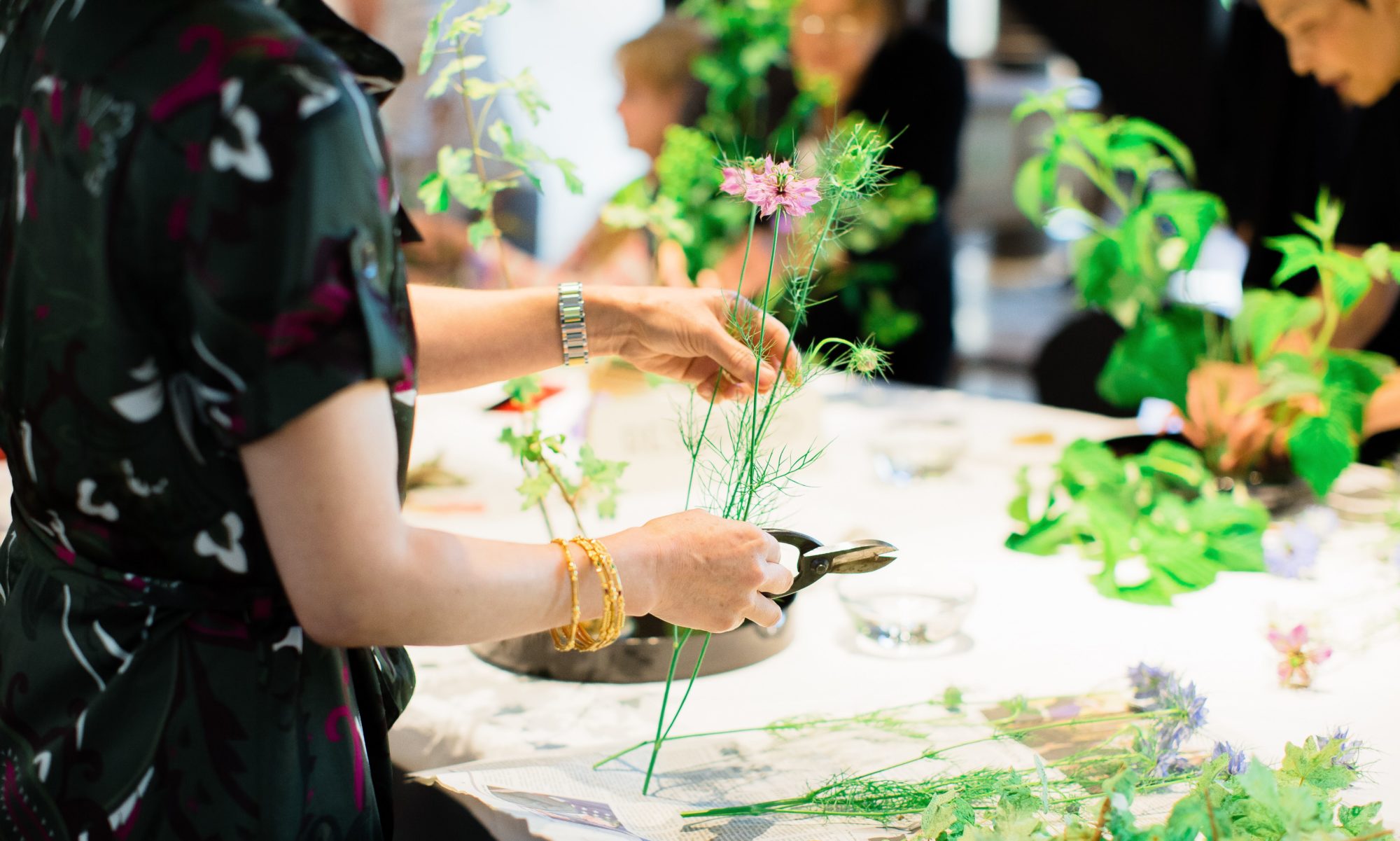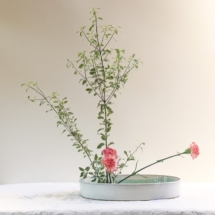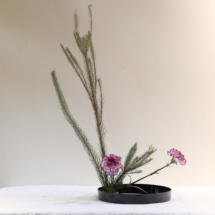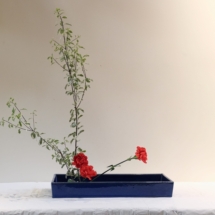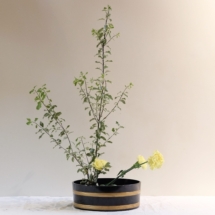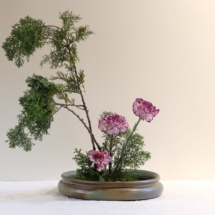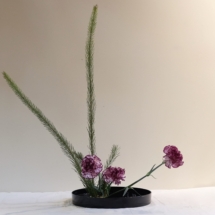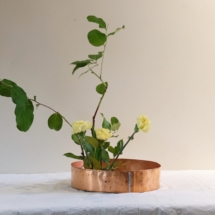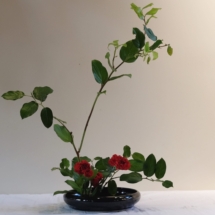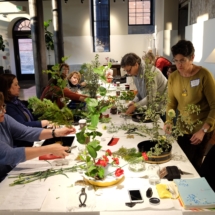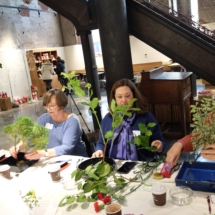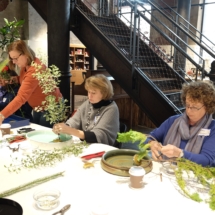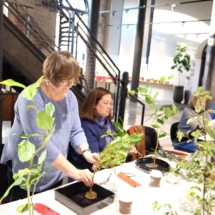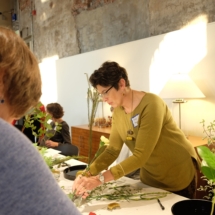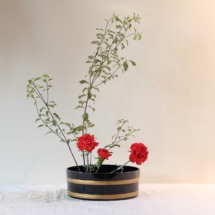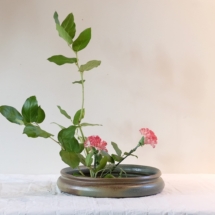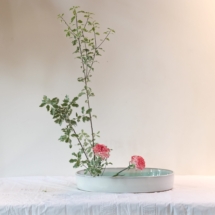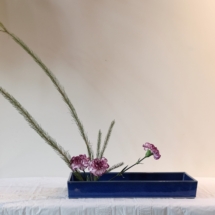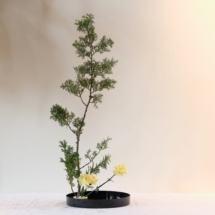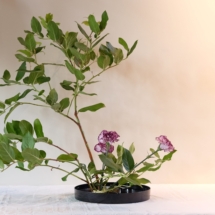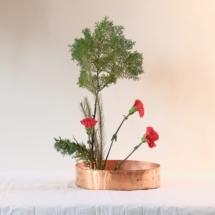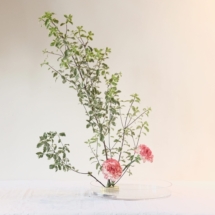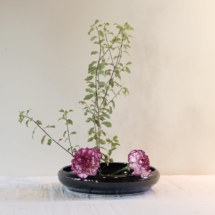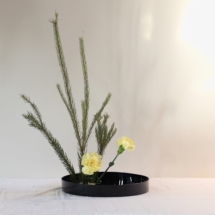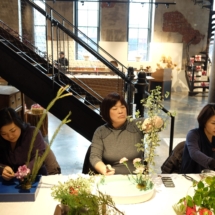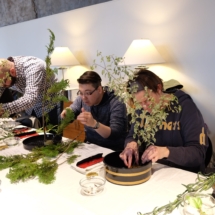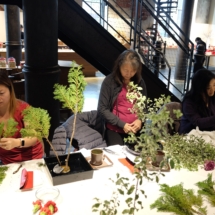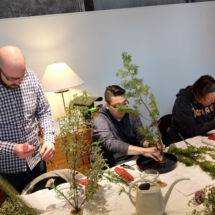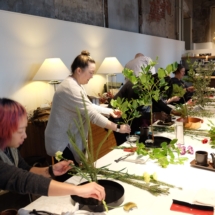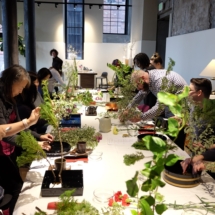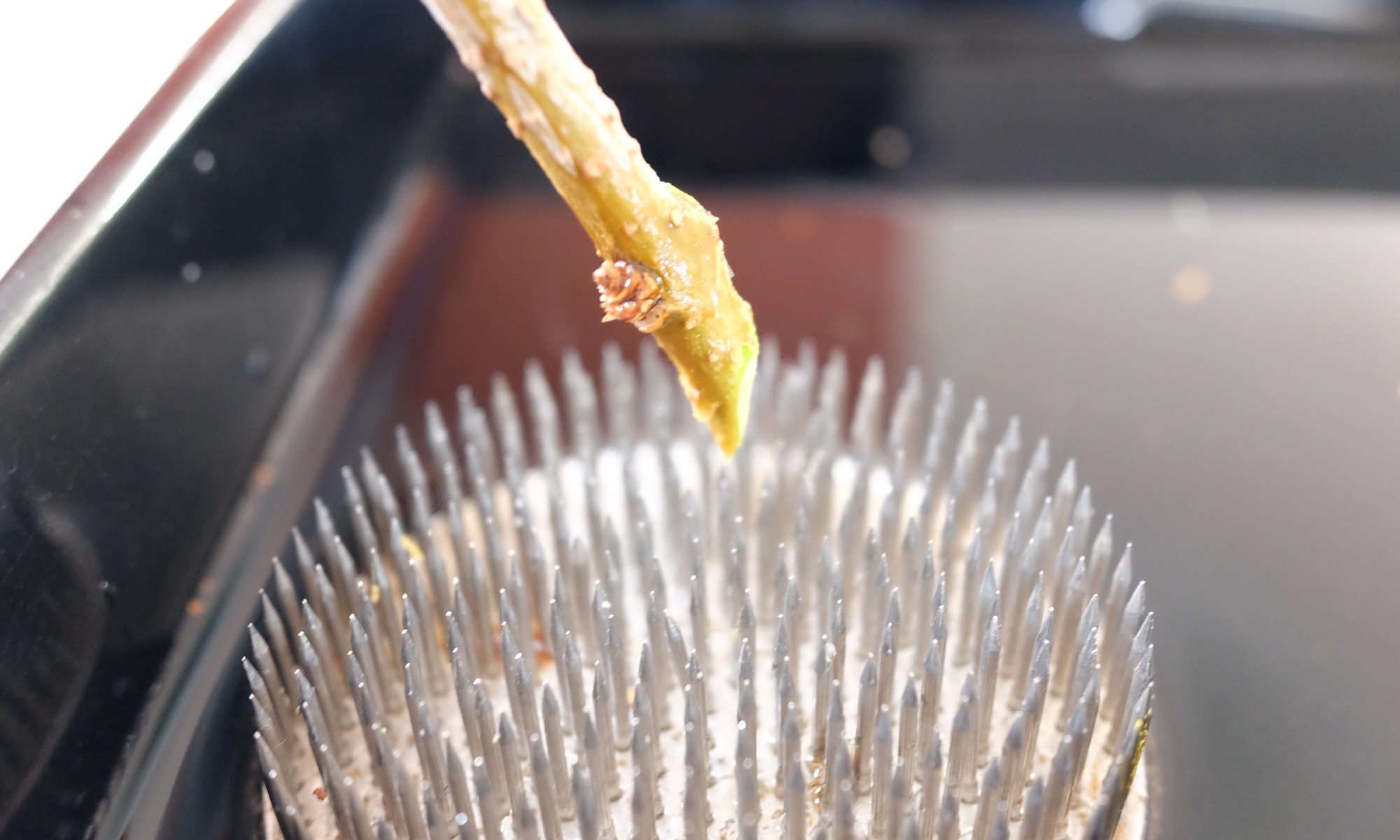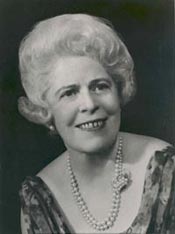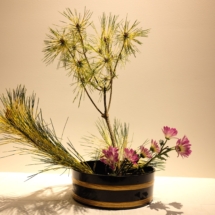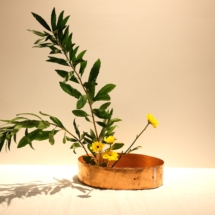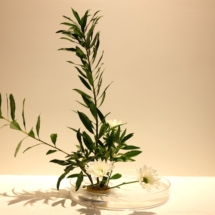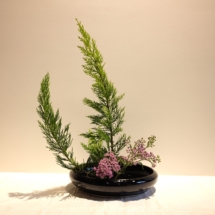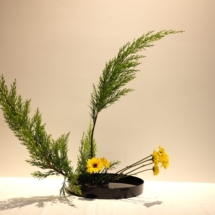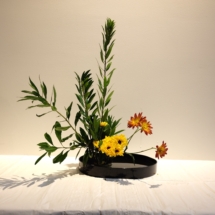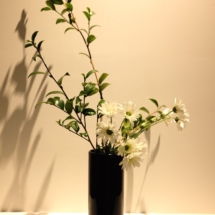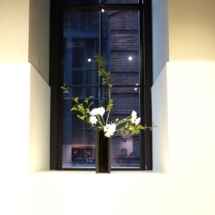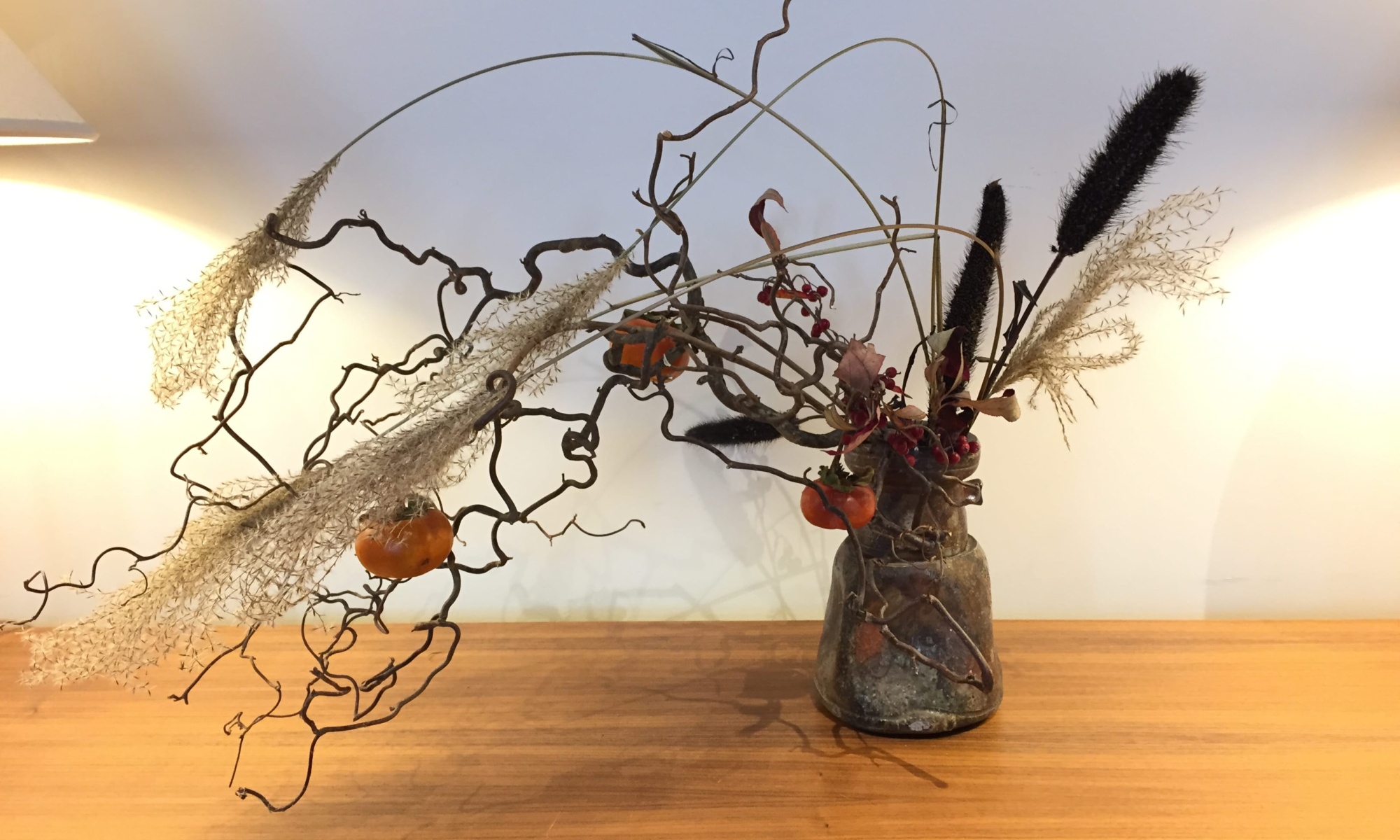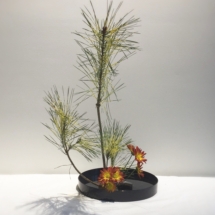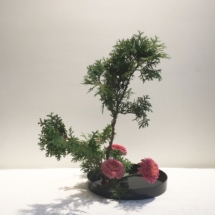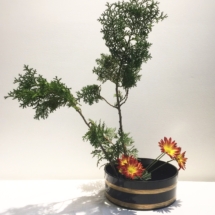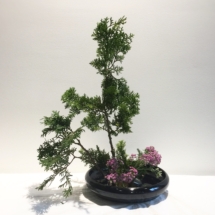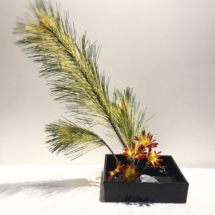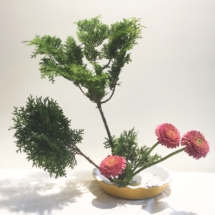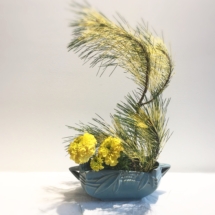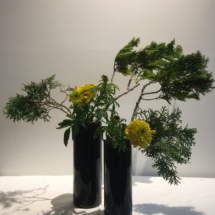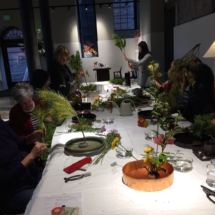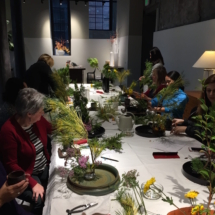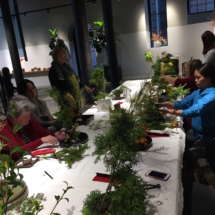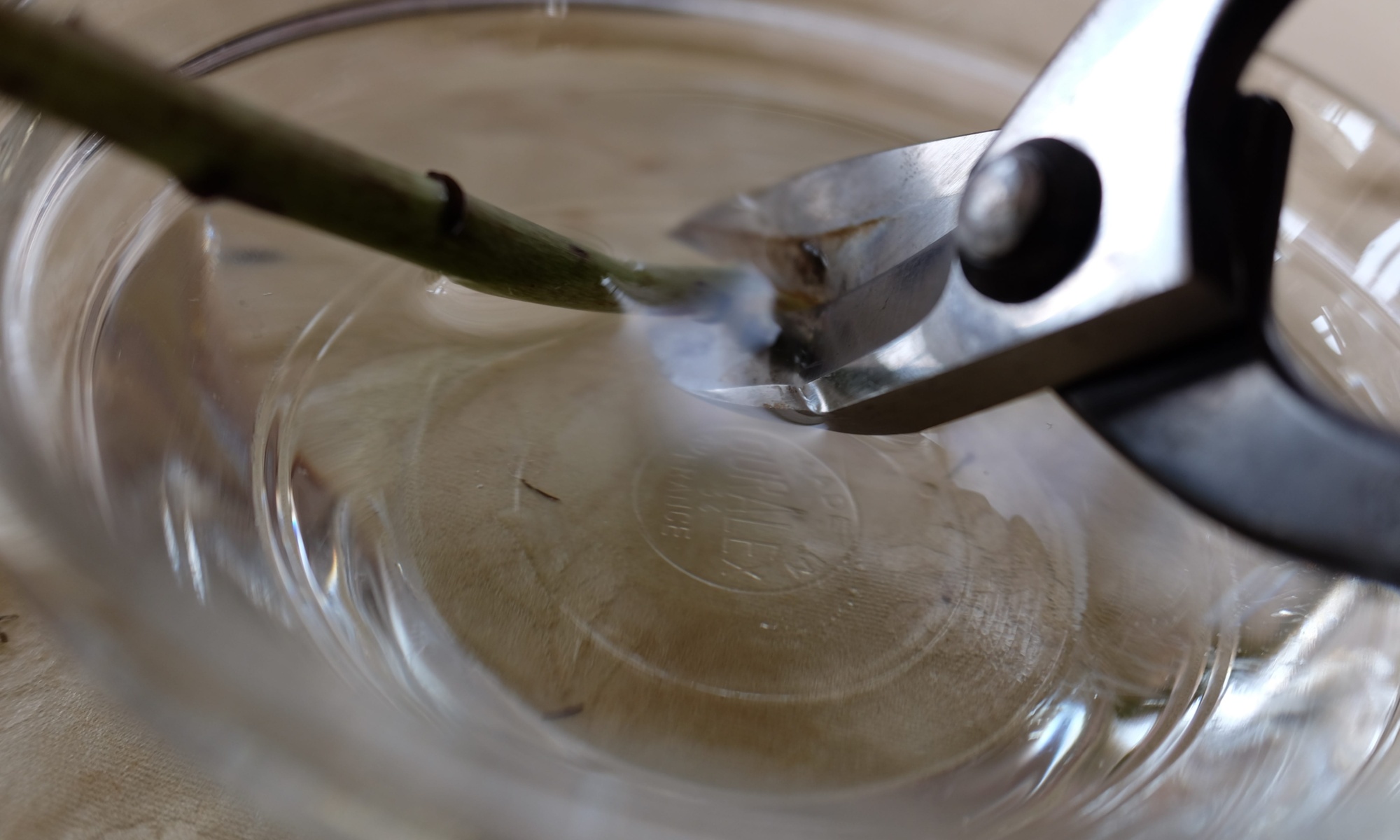They are all first-time-ever Ikebana arrangements. Great work, everyone!
Class Photos: 12/9/2017 (Morning)
We had a very lively class. Thank you so much for coming! Enjoy these beautiful arrangements.
What is Ikebana “School”
When Ikebana was first developed, there was only one way of arranging flowers: Ikenobo. Hence Ikenobo is called “the origin of Ikebana.” There was only one “school” to start with.
In the course of the history of over 550 years, however, some ikebana teachers under Ikenobo branched out from the main stream to establish their own styles. Each branched-out group has its own identity as a “school.”
Although they are under the umbrella of ikebana, different schools have different instruction and emphasis. Some say there are more than a thousand different schools!
Some schools, such as Ikenobo, are huge with millions of members worldwide. Some schools are tiny organizations that exist in only certain city or region of Japan.
Ikebana International website lists the following nine schools. I assume they are among the largest.
(in alphabetical order)
Chiko
Ichiyo
Ikenobo
Misho
Ohara
Ryuseiha
Saga Goryu
Shinpa Seizan
Sogetsu
How many of them have you heard before?
What Is the Tip for Using Kenzan
If you want to place the branch onto the Kenzan, how do you do it?
I have seen so many people try to place the cut end of the branch against the pins of Kenzan. However, it’s hard to securely place the branch that way.
It’s rather counter-intuitive, but try this.
- You first cut the branch not straight, but slanting, like shown on the photo.
- Holding the branch with both hands, you place the cut end of the branch straight onto the Kenzan. You almost thrust the Kenzan with the sharp tip of the branch.
- Once the branch is securely placed onto Kenzan straight, then slant the branch to the side of the longer bark, not the other way.
In other words, if you want to place the branch slanted to one direction, you have to leave the bark long on the side to which the branch will incline.
You will now securely place the branch. Try a couple of times, until it becomes natural to you.
Who Founded Ikebana International
Among those who learned ikebana while living in Japan was Mrs. Ellen Gordon Allen, the wife of General Frank Allen.
The United States National Arboretum website introduces Mrs. Allen as below.
“She was captivated by the philosophical and aesthetic elements of ikebana that stressed harmonic relationships. Mrs. Allen earned her Teachers Certificate from the Ohara School and began teaching ikebana.
She turned her mimeographed lessons into a small book, Japanese Flower Arrangement: A Complete Primer, which saw a number of printings. As she taught, she became determined to share her passion for this traditional art form throughout the world.
In 1956, she worked with ikebana school masters in Tokyo to found Ikebana International. She dreamed of spreading the practice of ikebana, believing that its principles would help foster greater world peace. She stated the organization’s motto as “Friendship through Flowers.” Mrs. Allen returned to Washington, D.C., and helped found Chapter No. 1.”
Ikebana International (I.I.) had only 1 chapter with 20 members when Mrs. Allen founded it. Sixty years later, now there are over 7,600 members with 161 chapters in over 50 countries!
Each chapter is affiliated with the head quarter but has its own activities. The Seattle Chapter #19, of which I’m a member, was chartered in 1959, and currently there are almost 100 members. Its activities include demonstration of flower arranging, exhibitions, lectures/programs on related arts, tours, and workshops where one can study Ikebana under the direction of various school Masters.
Its public exhibitions include Northwest Flower and Garden Show in February, Cherry Blossom Festival in April, Annual Exhibition in May, Japan Fair in July, Japan Week in the fall.
The I.I. Seattle Chapter #19 members voluntarily place ikebana arrangements at the Seattle Art Museum all year round.
There may be an Ikebana International chapter in your city. Would you like to know if there is a chapter in your city? Here is the list of current chapters around the world. Please check it out!
As a member of Ikebana International myself, I thank Mrs. Allen for founding this wonderful organization.
Class Photos: 11/16/2017
It was rainy today, but the Ikebana class was hot!
Great job, everyone, for creating beautiful arrangements.
Which Material is Suitable for Fall Arrangements
If you live in a tropical place surrounded by beautiful lowers, lucky you. You don’t have this problem. If you are like me, living in a place where fresh local flowers are getting scarce lately, you might get depressed….
Let’s not! If you look around, you will find abundance of beautiful materials for your fall arrangements.
Fruits

After those pretty flowers are gone from branches, what do you see next? With successful pollination, now you see fruits on the branch. Some fruits look delicious and the best way to enjoy them is to eat them. Some fruits, however, may be too sour or too ripe. They are not good enough to be consumed.
They are good enough to please your eyes, though. The rich color and dense volume of any fruit, large and small, gives you totally different impression from any flower.
You don’t need many of them. Even a single fruit on a vase may have a significant presence.
Leaves
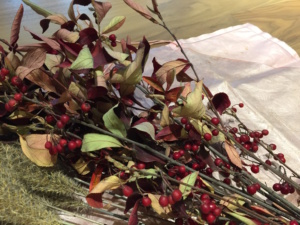
Maple is not the only tree whose leaves turn color. The foliage of many perennials change color before finally wilting. Leaves just about to fall (but not yet) give you such a delicate feeling.
Grass
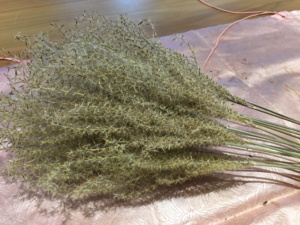
Lacy Pampas grass, sticking out of green leaves, is a good addition. You can use it as dry material, which means you don’t have to remain the tip under water. The lacey appearance of the grass softens the atmosphere and appearance of other materials.
You might have heard a Japanese term “wabi-sabi.” Although there is no good English term that precisely express the meaning of “wabi-sabi,” somewhat rustic appearance of fruits, leaves with turning color and grass, all perfectly represent the beauty of “wabi-sabi.” Let’s enjoy it to the full in this season!
Class Photos: 11/11/2017
Thank you for joining us for the Ikebana lesson today.
Please enjoy the photos, and hope to see you soon at the future lessons!
How Has Ikebana Kept Its Popularity for over 500 Years
As mentioned in What Is The Origin of Ikebana, ikebana as we know it dates back at least to 1462. You might wonder how it has survived over 500 years and many people (like me!) still enjoy practicing it.
As you can imagine, over the long course of history, ikebana faced many difficulties. Once it gained popularity, and other times it almost became extinct. Whenever it faced difficulty, ikebana found new audience and spread again.
Samurais and aristocrats – its original fans
Ikebana gained its popularity first among samurais and aristocrats in Japan. During the Edo period (1603 – 1863), ikebana also became popular among ordinary people. Both men and women used to enjoy it.
Ikebana crisis in 19th century
When Meiji period started and Japan opened its doors to the West at the end of the 19th century, people in Japan considered ikebana as outdated and it lost its popularity. With Meiji Restoration, Buddhist temples and samurai clans, both of ikebana’s main patrons, lost their prestige that they had once enjoyed. With no powerful patrons and very little interest among the public, ikebana was at the verge of extinction.
In the beginning of the 20th century, ikebana regained its popularity, with new audience. The Meiji government positioned ikebana and tea ceremony as two important subjects that young women should study at school. In most girls’ schools that were newly established in that period, ikebana became a compulsory subject. Since then, a notion that ikebana is practiced by women rather than men has prevailed.
New crisis for Ikebana
Ikebana faced with another crisis during World War II. The military-led government back then considered any art such as ikebana as unimportant or even as “evil extravagance.”
How Ikebana speed around the world
Once World War II was over, people were hungry for artistic freedom. When the flower exhibition was held in Tokyo in November 1945, only three months after the end of the war, so many people came to see the show.
Ikebana also found new audience.
While Japan was occupied by the allies, many military officials were assigned to Japan from the US, and many brought their wives. Ikebana leaders in Japan in those years, including headmasters such as Sofu Teshigahara (Sogetsu School) and Houn Ohara (Ohara School), came up with a plan to hold ikebana classes for the wives of those military officials.
These wives took ikebana classes and obtained a teacher’s certificate while in Japan. So did wives of diplomats who were assigned to Japan from various countries. After returning to their own countries, those women started to teach ikebana in their own countries.
Although originated in Japan, now there are so many people enjoying ikebana around the world. We have to thank those wives of diplomats and military officials for spreading this wonderful culture worldwide.
How to Make Flowers Last Longer
Of course you know that fresh flowers won’t last forever. They are not dry, nor are they preserved. They look beautiful on the first day, but the next day they may be wilted.
But of course you want the flowers to last as long as they can. What can you do to make them flowers last longer?
Why Cut Flower Stems under Water
The simplest, but most effective way to make your beautiful flowers last longer is to cut stems under water.
The vascular system of plants transports water and nutrients from the roots to the leaves upward. When the stem is cut, this vascular system is truncated. The air may be drawn into the stem and creating the air pocket and blocking the water absorption.
If you bought the cut flowers at the flower shop, they were most likely transported dry. With the air pocket in the stem, the plant won’t be able to absorb water even if there is water in the vase.
When you cut the stem under water, you prevent creating the air pocket, so that the flowers can continue to absorb water from the vase.
How to Cut Flower Stems under Water
When arranging flowers, right before placing each flower, cut the stem under water, half an inch or so. You may want to cut a couple of times for each stem.
If you don’t arrange flowers right away after bringing them home, cut each stem under water and then keep them in the water until you make an arrangement. When you arrange flowers, don’t forget to cut stems under water again.
For some plants (like wisteria), you may want to dip the stem edge into alcohol. For other plants (like poinsettia), you may want to briefly burn the edge. For most of the flowers, however, cutting the stems under water will help prolong the life.
To avoid your scissors from rusting, don’t forget to wipe out water after cutting the stems under water. A small towel comes handy, so keep it together with your scissors.
